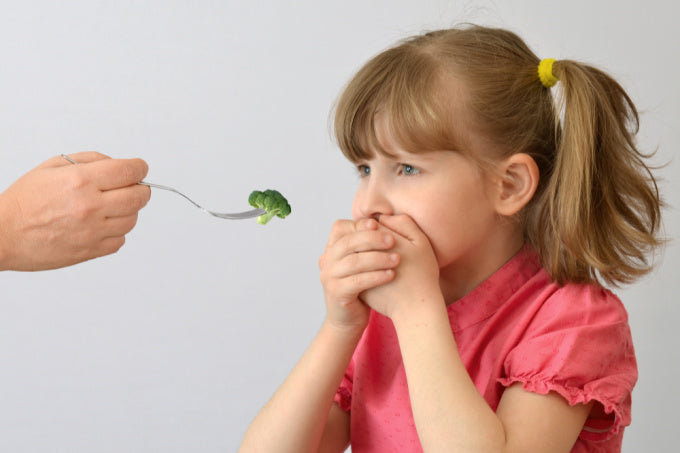Understanding the difference between fussy eating and ARFID in children
Childrens' eating habits can really vary not only from child to child but they also will change as they grow.
If you had a baby that pretty much ate everything you put in front of them, you might have been dumbfounded when they became a toddler and seemingly overnight they started refusing their favourite foods or started throwing food!
If you are at this point in your weaning journey, then you might find my article Dealing With Toddler Food Refusal helpful.
But there may come a point that you start to wonder if your child’s eating habits are more than just being a picky eater.
So it’s important to understand the difference between picky eating and actual food aversion like ARFID (Avoidant Restrictive Food Intake Disorder)
I thought it might be useful to explore some of the differences between fussy eating and ARFID.
What is Fussy Eating?
- Fussy eaters will often have food that they much prefer whilst completely rejecting other foods and this may be based on texture, taste or the smell of foods.
- They may only eat a limited range of foods which might cause you concern as a parent as to how to get the right amount of nutrients into them.
- Fussy eaters might also exhibit behavioural reactions when it comes to meal times. Like the throwing of food, tantrums, food refusal or even avoidance of meal times.
- Fussy Eating is very commonly comes along with developmental changes in kids. As toddlers start to assert their independence in both play and movement, they will often do the same with their eating and preferences for food types.
What is ARFID?
- Arfid or food aversion goes beyond preferences to certain foods and a child may display super emotional responses to foods like fear or anxiety.
- Children with food adversion may also have very physical responses to certain foods like gagging or even being physically sick.
- Where fussy eating may be a phase during child's eating journey, ARFID or food aversion may continue over a very long period of time and may interfere with day to day functioning and quality of life.
- Where fussy eating can often been seen alongside developmental changes, food aversion can develop in children following traumatic experiences with like choking, force feeding or illness following food.
How to Help Fussy Eaters
I have plenty of fussy eating resources over on the Tips For Fussy Eaters Section of The My Fussy Eater blog, but my top 3 would be these:
- Exposure - Keep exposing your picky eater to foods even if you know they will refuse them. Let them see them, let them play with the food to get used to the feel of it but with no expectation of them eating it.
- Change It Up - Change the way you serve certain foods. Use colourful plates and bowls.Try a divided plate so you can serve foods you know they like with foods they are still yet to try so they can be seperated and not touching to take the pressure off.
- Relax & Be Patient - I know it can be so frustrating when kids refuse to eat, but it's really important to try and not lose your patience! Hard I know, but it will only increase the anxciety around mealtimes. Just keep trying one new food at a time!
How To Help Children With Arfid
If you think your child may have food avoidance, then it's really important that you seek help from healthcare professionals.
In the first instance, contact your GP or Paediatrician who should be able to put you in touch with the right bodies of professionals who may help using some of the following tools:
Gradual Exposure & Desenitisation - to reduce the anxiety around certain foods and increase their tolerance for the foods they have reactions to.
CBT - they may employ techniques like cognitive behavioural therapy to help change negative thoughts and beliefs around the food aversion.
Creating A Supportive Environment - They can help you put in place tools and resources which will create a safe and supportive environment that acknowledges the food aversion but that also provides opportunities and tools to help with progress.
You can learn more about ARFID and where to seek further help here.
